I've pondered kite on a stick (KOAS), as advanced by Pete Lynn (jnr), for some years. Peter (snr) wrote about Pete's ideas/experiments in his March 2010 newsletter. Although I can no longer find those interesting notes online, I must have been sufficiently interested at the time to keep a copy: https://drive.google.com/file/d/1q-qKCmkMxvoqf0Y6U8KbQmvnUqc5GCcZ/view?u... . It's, as ever with Peter's writing, an interesting read. The precis: Attach the LE to a "stick" (which term I'll continue to use), perhaps 2 sticks, and position the kite with the stick rather than the kite lines. The stick aids in launching and preventing the kite from going in the water. Another potential advantage is that more efficient kites can be used. If the stick is controlled to constrain the kite movement, it can prevent the kite from overflying and thereby luffing. In Pete's case, I think he held the stick(s). In larger scale development, the bottom of the stick might be attached to the deck with a universal joint (perhaps, when further developed, something more sophisticated than my rubber thong tied to the mast base with a bicycle inner tube). The stick position would be set, with some tolerance, by a halyard and a couple of other lines.
In yesterday's experiment, I used 3 lines apart from the kite lines:
- A halyard, from the top of the mast, to raise the stick
- a halyard on the stick to raise the kite along the stick and
- a line on the bag the kite was in so that that could be removed.
None of those control lines had clutches/cleats - so they had to be tied off! That that could be done confirms two things. One: I really should set up experiments better (in this case get appropriate clutches!). Two: each operation is largely distinct and can be done indepdently (which allowed time to tie, and subsequently untie, lines).
This video shows yesterday's experiment. 10-12knots of breeze, 4sqm SS kite. Although it was clunky, I think it has promise.
If deployment from, and recovery with, a snubber can be sorted (I'm confident that it can be), then the kite could be fixed permanently to the stick. There is no need for the halyard to raise the kite on the stick. A snubber above the kite would be annoying drag - but there are plenty of snubbers at the tops of masts which people, including me, are happy to live with for the convenience and safety they provide. A snubber running on a stick would be less prone to problems than a conventional spinnaker snubber.
My initial thoughts were that, once deployed, the kite would be controlled with conventional lines - probably PG setup with one trim line and two steering lines (brakes). But the stick introduces an interesting possibility. Separating two flying lines can stabilise a kite in traction mode - but the stability can be short lived. Although I've had setups that remain stable for quite some time (eg see: SSPGLaunch) oscillations tend to start then increase to catastrophic extent. But fixing the kite lines and also having a stick, relatively constrained, may prevent oscillations growing. So this would provide a simple mechanically stable system. My first KOAS experiment, in 2020, had essentially this setup. Although the bar to which the kite lines is attached only makes brief appearances, this shows the concept:
Some might say that this seems like a lot of hard work to get something that is starting to look like a conventional sail on a mast. But the crucial difference (and it's one of many), is that the kite load is still transferred to the deck and provides a lifting and thrust forces rather than pitch down and heeling (and some thrust) moments.
As ever, any thoughts woud be welcome.
